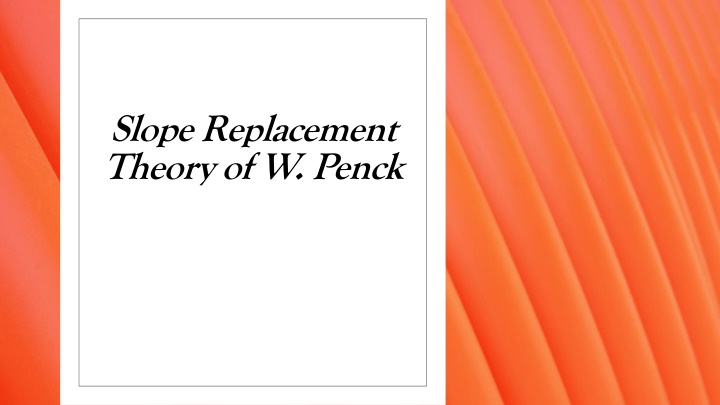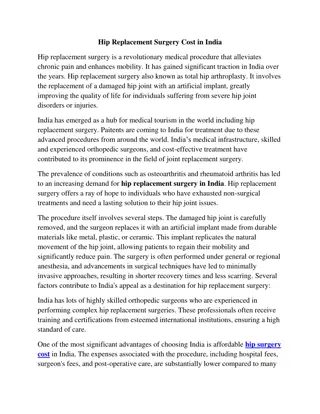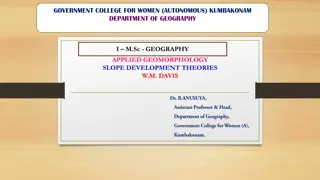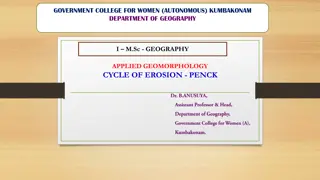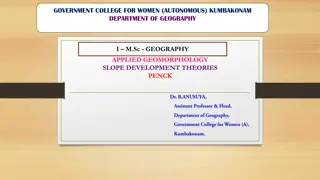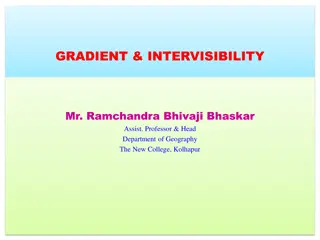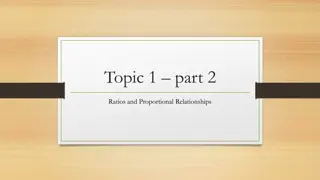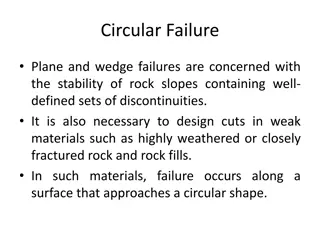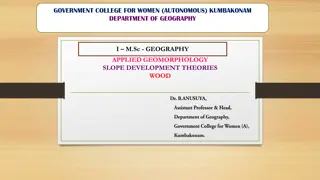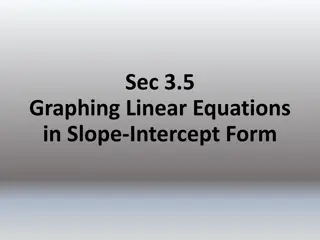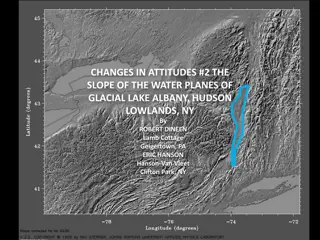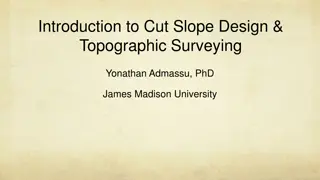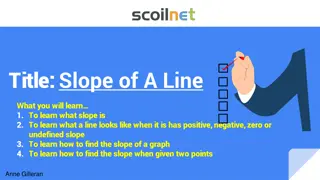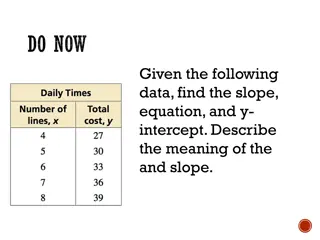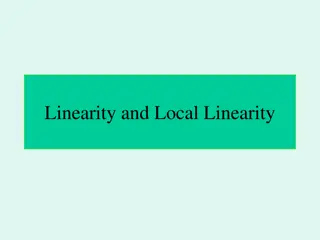Evolution of Hill Slopes: Penck's Slope Replacement Theory
Penck's slope replacement theory proposes that the angle of a hill slope decreases as gentler slopes replace steeper ones, leading to the concavity of the slope profile. The model explains how vertical erosion by streams and denudation shape hillslopes, causing them to retreat in a parallel manner. It details the flattening of slopes, formation of valley side slopes, and the process of weathering and removal of slope debris. Penck's model uses a rock cliff to illustrate the evolution of hill slopes through uniform weathering and retreat except for the lowest segment.
Download Presentation

Please find below an Image/Link to download the presentation.
The content on the website is provided AS IS for your information and personal use only. It may not be sold, licensed, or shared on other websites without obtaining consent from the author.If you encounter any issues during the download, it is possible that the publisher has removed the file from their server.
You are allowed to download the files provided on this website for personal or commercial use, subject to the condition that they are used lawfully. All files are the property of their respective owners.
The content on the website is provided AS IS for your information and personal use only. It may not be sold, licensed, or shared on other websites without obtaining consent from the author.
E N D
Presentation Transcript
Slope Replacement Theory of W. Penck
The slope replacement theory highlights that the maximum angle of a hill slope decreases through replacement from below by gentler slopes, causing the greater part of the profile to become occupied by the concavity. The concavity may be either smoothly curved or segmented.
Basic premises of Pencks Model The form of hillslope is dependent on the relative rate of vertical erosion by streams at the slope base and denudation (removal or transportation of slope debris downslope or from the slope base). The retreat of slope unit backward depends on the gradient of hillslope. Steeper gradient facilitates more active retreat than gentle gradient. The slope retreat occurs in parallel manner which results in the replacement of lower segment of slope profile by new unit of gentle gradient.
Flattening of slopes always takes place from below upward. The form of valley side slopes of streams depends on three rates of stream erosion i.e. accelerating rate of erosion, decelerating rate of erosion and constant rate of erosion, which produce convex, concave and rectilinear slope forms respectively. There is a uniform rate of weathering of rocks of slopes. As the required mobility is attained, the removal of weathered materials begins and the rate of removal (denudation) matches with the rate of weathering. There are angular breaks of slope.
Explanation of Pencks Model For the explanation of evolution of hill slope, Penck selected a steep rock cliff of homogenous composition. The upper surface of the slope unit is surmounted by level surface. There is a river at the foot of the slope which is neither eroding nor depositing but is capable of removing all the materials coming at the foot hill from upslope segments. In a unit time a superficial layer of rock, of definite thickness the same everywhere, is loosened and removed. The method of removal is that loosened particles of rock crumble away and fall. For this to happen the gradient must be too great to allow the little pieces of rock, just loosened by weathering but not further comminuted and reduced, to remain at rest. This gradient is available for each unit of rock face except the lowest. Thus, the slope face except the lowest segment undergoes parallel retreat due to uniform rate of weathering and instantaneous removal of weathered materials from slope segments.
The lowest segment does not experience parallel retreat because its slope angle is not such that it may attain required mobility which may help in the removal of weathered materials. Thus, the lowest segment of initial cliff slope face A-A replaced by a new young unit of gentle slope angle A-B and the cliff slope profile now consists of two slope units viz. A-B and B- B . The same process is repeated during second time interval all along the slope segment and thus new slope face B-B undergoes parallel retreat and reaches the position of C-C . The B-C segment does not experience parallel retreat due to lack of required degree of mobility and thus non- removal of materials, with the result the lowest segment A-B is again replaced by new unit of further gentle slope.
The same process is repeated during third time interval (uniform rate of weathering and parallel retreat) and the initial slope profile (A-A ) reaches the position of D-D and gentle slope segments extends from A to D due to parallel retreat. Due to repetition of the same mechanism during succeeding stages of time intervals the position of slope profiles shift to E-E , F-F and so on and lowest gentle slope segment extends gradually from A to A-B, A-C, A-D, A-E, A-F positions . And so on. Thus, small segments of new basal slopes i.e. A-B, B-C, C-D, E-F combine together and form a continuous slope of uniform gradient (A- F).
Conclusion It may be emphasised that the initial neglect, subsequent misinterpretations (by W. M. Davis, faulty translation in English) and belated recognition of Penck s work has given birth to numerous controversies regarding Penck s deductive model of slope evolution. A. Young has evaluated Penck s model and has remarked, Penck s model presents a hypothesis of slope evolution in which gentle slope succeeds steeper, but in a manner very different from the Davisian scheme. In Penck s system parallel retreat only takes place on an initial rectilinear slope; such a slope is transformed into a concave form relatively early in its evolutionary history, and development then proceeds by successive replacement from below. If this replacement is not in discrete stages but continuous, then no part of the concave slope retreats parallel to itself.
